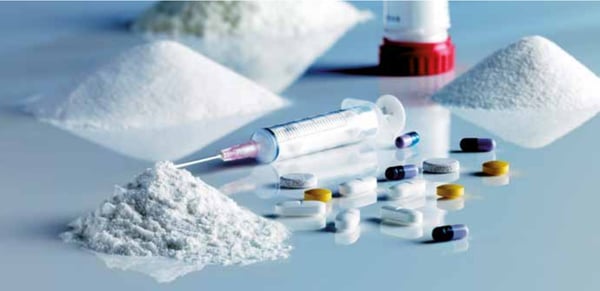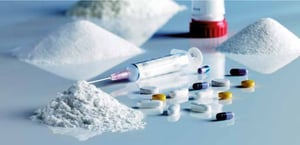Spray drying is a technique used to produce a dry, or coarse, powder from a liquid or slurry via rapid drying with a hot gas. This technique is commonly used when drying thermally-sensitive materials, such as foods (coffee, enzymes, spices), industrial materials (ceramics, paint pigments), and pharmaceuticals.
The spray drying process consists of 3 phases:
- Atomization
- Drying
- Recovery of powder

Atomization is the most critical stage in the spray drying process to achieve desired characteristics of the final product, such as viscosity and particle size. During atomization, the liquid or slurry is converted into small liquid droplets, or drop sized spray. Viscosity is both affected by and a significant determining factor influencing atomization. The viscosity of the fluid or slurry being atomized is a determining factor of the energy input required. "A higher viscosity solution will require higher energy inputs to attain given volume flow rates from the atomizer" (Centre for Industrial Rheology).
During the drying phase, atomized droplets are dried to individual particles using air that has been heated by a natural gas. When working with flammable or "oxygen-sensitive" liquids, such as ethanol, air is then replaced by nitrogen gas for the drying phase.
The final phase involves the recovery of your spray dried powder from the exhaust gas.
In pharmaceuticals it is often used " in the production of active pharmaceutical ingredients (APIs), the active ingredients in drugs" (BioSpace), as well as the production of excipients and dry powder formulation/dry powder aerosols. Other pharmaceutical that are commonly spray dried include penicillin, blood products, enzymes and vaccines (Pharmapproach). Spray-dried monoclonal antibody (mAb) powders offer many versatile applications, including preparing high-concentration formulations for subcutaneous administration. (PubMed)
Spray drying of pharmaceuticals provides many benefits, including drug compressibility, facilitation of transport, extended shelf-life, and enhanced solubility.

There are alternative drying methods to spray drying, including freeze dryers, drum dryers, and pulse combustion dryers. The advantages of spray drying include the speed of drying, suitability for heat sensitive products and ease in maintaining quality of products. (BioSpace)
Want to learn more about the importance of viscosity in the spray drying process? Contact us to speak with one of our rheology experts today!
Written by: Eden Reid, RheoSense Senior Marketing and Sales Operations



